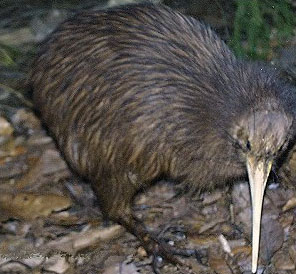Introduction
One could spend a lifetime caring for a small number, or even a single species, of the most frequently encountered pet-trade birds, and never lack for new and interesting experiences. However, sometimes we long for something different – after all, keeping birds in captivity has long fascinated human-kind and many, from hummingbirds to ostriches, do amazingly well given the proper care.
I became aware of the possibilities open to serious aviculturists early on, while working for bird importers and later as a bird keeper at the Bronx Zoo. Many of the most interesting species that I encountered are now bred in captivity and available in the pet trade. Asia and Europe have always been hotbeds of species availability, but North American breeders have much to offer as well (many of our native species are popular pets overseas, but generally illegal to keep here in the USA).
Today I would like to introduce you to some birds that you may wish to consider when expanding your collection. All are well-established in the pet trade, and have been captive-bred for many generations. Please bear in mind that the care of most differs greatly from that required by more familiar pet-trade species. Future articles will cover other such birds, and captive care in more detail.
Be sure to research carefully before attempting to keep a new bird, and please write in with your questions and with your “wish list” – I and the Bird Room staff will do our best to help you to acquire the species in which you are interested.
Golden-fronted Leafbird, Chloropsis aurifrons
This gorgeous nectar-feeding specialist is one of my all-time favorites. Active and alert, it needs a bit of room to thrive, and cannot tolerate temperatures below 65 F or so. 
The back is colored dark green, fading to grass-green on the yellow-bordered breast, while the throat and wing-curve is blue. The face and crown are highlighted in black and gold, tinged with purple iridescence. Although slenderly built and but 8 inches in length, leafbirds can be quite aggressive towards other species – making up in agility and attitude what they lack in size. Golden-fronted leafbirds range from India and Myanmar south through Sumatra.
Leafbirds require a quality softbill diet, such as moistened Pretty Bird Softbill Select, as well as crickets and mealworms. Nectar and a fruit-based mix (Goldenfeast Nectar Gold and Tropical Fruit Pudding Blend), as well as diced banana, apple, papaya, orange and other fresh fruits, should be offered on a daily basis. They quite literally pick up and inspect nearly every bit of food offered, scattering a good deal in the process, and so need to be fed more heavily than similarly-sized birds (this hold true also for birds that consume a good deal of nectar). They drink copiously and bathe frequently. Image referenced from Wikipedia.
Pekin Robin, Leiothrix lutea

These birds are favored pets in their native Southeast Asia, and are well-established in the USA as well. Those I cared for formed small flocks during much of the year and were not aggressive towards each other when paired (they were, however, in a large exhibit – breeding-season aggression may occur in smaller quarters).
Pekin robins will accept the foods listed as above for leafbirds, but do not require nectar. They should also be given a daily ration of small seeds, such as may be found in a high quality finch mix . Image referenced from Wikipedia.
Red-crested Cardinal, Paroaria coronata
With its dark gray back, bright scarlet head and crest  and white breast, this small South American import makes a striking addition to any collection. In common with all cardinal-like birds, they need a large cage or aviary and are best housed in pairs. Most tend to be shy, but once settled in take readily to captivity and may even breed if given enough space and a stress-free environment.
and white breast, this small South American import makes a striking addition to any collection. In common with all cardinal-like birds, they need a large cage or aviary and are best housed in pairs. Most tend to be shy, but once settled in take readily to captivity and may even breed if given enough space and a stress-free environment.
A feeder I established at a field station in Venezuela drew several of these birds daily – they seemed curious about me, and would leave their food to inspect me from a safe distance. Captives retain this trait and never fail to notice all that goes on about them.
This and the closely related red-crowned, or Dominican cardinal, P. dominicana ( a popular pet in its native Brazil) will thrive on finch seed prod and fresh fruit, and should be offered 2-3 small insects daily as well.
Check back next week for the rest of this article.
 That Bird Blog – Bird Care and History for Pet Birds
That Bird Blog – Bird Care and History for Pet Birds

 rhaps, recognition of other individuals.
rhaps, recognition of other individuals.
